The Best of Surreal Art
Digital surreal art is a form of artistic expression that combines elements of surrealism with digital tools and techniques. Surrealism, as an artistic movement, emerged in the early 20th century and is characterized by its exploration of the unconscious mind, dreams, and the irrational. Digital surreal art takes these concepts and incorporates them into the digital realm, using software such as Photoshop, Illustrator, 3D modeling programs, and digital painting tools to create imaginative and often bizarre compositions. Here are some key features and aspects of digital surreal art:
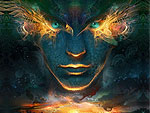
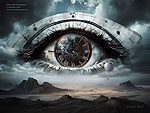
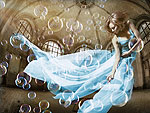
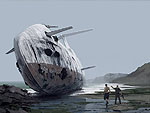
Dreamlike Landscapes: Digital surreal art often features landscapes and environments that are dreamlike and fantastical. These can include floating islands, impossible architecture, and distorted perspectives that defy the laws of physics.
Unexpected Combinations: One of the hallmarks of surrealism is the juxtaposition of unexpected elements. In digital surreal art, artists may combine disparate objects, creatures, or concepts in a single composition to create a sense of surprise and wonder.
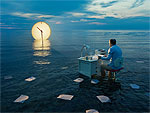
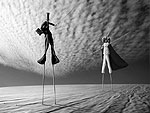
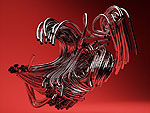
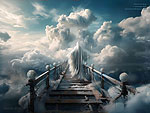
Symbolism and Metaphor: Like traditional surrealism, digital surreal art frequently incorporates symbolism and metaphor. Artists may use symbolic imagery to convey deeper meanings or explore psychological themes.
Manipulated Reality: Digital tools allow artists to manipulate and distort reality in ways that were not possible with traditional art mediums. This can include morphing shapes, altering textures, and creating illusions of depth and movement.
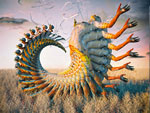
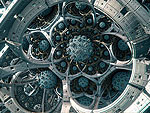
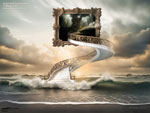
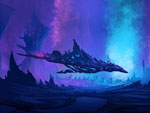
Imaginative Creatures and Characters: Digital surreal art often features strange and otherworldly creatures, as well as enigmatic characters that inhabit the artist's imagined worlds. These beings may defy biological norms and challenge viewers' perceptions.
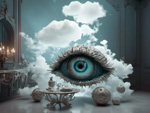
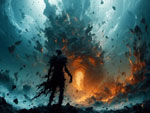
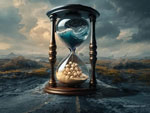

Color and Lighting Effects: Digital artists have extensive control over color palettes and lighting effects, allowing them to create atmospheres that range from ethereal and dreamy to dark and foreboding.




Mixed Media Approaches: Some digital surreal artists incorporate elements of traditional art techniques, such as collage, painting, or sculpture, into their digital compositions. This blending of mediums adds depth and texture to the final artwork.


Interactive and Animated Art: With advancements in technology, digital surreal art can also be interactive or animated, adding another layer of engagement for viewers. This can include interactive installations, virtual reality experiences, or animated short films.


Notable Artists:
Overall, digital surreal art pushes the boundaries of imagination and challenges viewers to question reality, inviting them into a world of mystery, symbolism, and creativity. Here are some notable digital surrealism artists who have made significant contributions to the genre:Android Jones: Known for his psychedelic and visionary digital art, Android Jones combines intricate detail with vibrant colors to create surreal and mesmerizing compositions.
George Grie: A digital artist known for his surreal and thought-provoking artwork. While he may not be as widely recognized as some of the mainstream art world's biggest names, he has gained a following and appreciation for his unique style and imaginative creations.
Mario S. Nevado (Aegis Strife): A digital artist specializing in surreal and dark fantasy art, Mario S. Nevado's work explores themes of emotion, identity, and the human condition through haunting and thought-provoking imagery.
Alex Andreev: With a background in traditional painting, Alex Andreev brings a unique blend of surrealism and futuristic elements to his digital art, creating surreal cityscapes and dreamlike environments.
Erik Johansson: Erik Johansson is known for his mind-bending photo manipulations that combine multiple images to create surreal and illusionary scenes. His work often challenges the viewer's perception of reality.
Dariusz Klimczak: A Polish digital artist, Dariusz Klimczak creates surreal and conceptual art that often features unexpected juxtapositions and imaginative scenarios, inviting viewers to contemplate deeper meanings.
David McLeod: David McLeod is recognized for his innovative use of 3D rendering techniques to create surreal and abstract compositions. His work explores themes of nature, geometry, and digital aesthetics.
Archan Nair: Archan Nair is known for his vibrant and colorful digital artwork that blends surrealism with elements of fantasy and mysticism. His pieces often feature intricate patterns and symbolic imagery.
Julius Horsthuis: Specializing in fractal art and 3D animation, Julius Horsthuis creates mesmerizing and otherworldly landscapes that push the boundaries of digital surrealism, exploring infinite fractal geometries.
Sylvia Ritter: Sylvia Ritter is a digital artist known for her whimsical and surreal illustrations, often featuring fantastical creatures and dreamlike environments. Her work has a distinctive style that combines intricate linework with bold colors.
These artists represent a diverse range of styles and approaches within the realm of digital surrealism, showcasing the breadth and creativity of this fascinating genre.
Cloud: KEYWORD-01